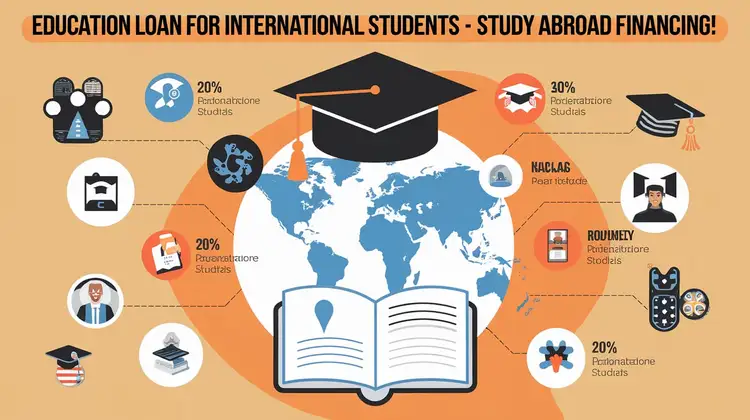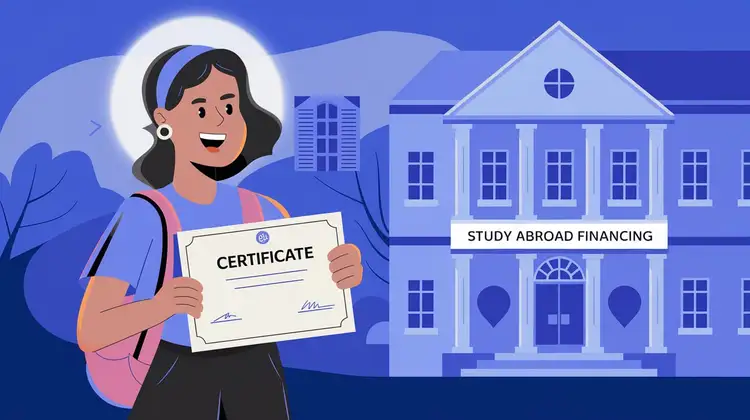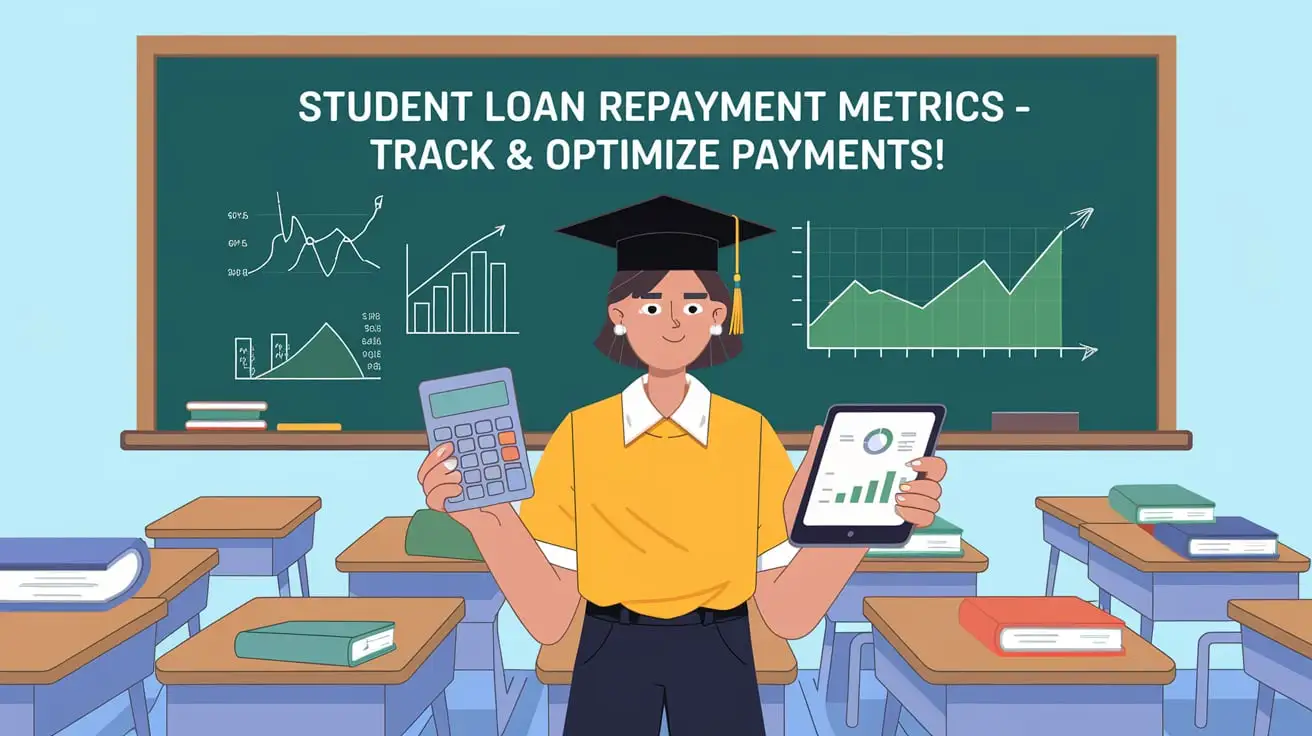Best Education Loan for International Students – Study Abroad Financing!
Published: 14 Dec 2024
Introduction
Overseas learning is perfect because it opens students to great experiences that physically transform their lives and academically enrich their knowledge. But the expenses for education abroad are quite high; therefore, education loans for the international students are very helpful in this regard. Making a clear plan of how to finance their study abroad program does not only relieve the student of any financial concern while studying, but also allows them to study well without worrying about how to make their next meal.
What is education loan for international students?
An education loan for international students is a good that is intended to facilitate the financing of education abroad. These loans are granted for tuition fees, to cover accommodation costs, travel and all other living expenses. In some cases, subject to the agreement of the lender and to the requirements of the student, it may also cover the costs of books, laptops or other material helpful in education.
Why should one Consider an Education Loan for Studying Abroad?
Education abroad is not a waste of resources, but it’s investment towards one’s future. However, what is financially required could be burdensome. Here’s why education loans are a smart choice:

1. Access to Quality Education
An education loan allows students to attend institutions of their dream and quality that they probably cannot afford to pay for.
2. Flexible Repayment Options
The terms given by most lenders are very relaxed in that the student can opt to pay back the loan after the completion of studies and many students get this after getting a job.
Education Loan for International Students – Study Abroad Financing
| Loan Type | Eligibility | Loan Amount |
|---|---|---|
| Bank Education Loan | Student’s Admission in Foreign University | $5,000 – $100,000 |
| Government-Backed Loan | For Government-Sponsored Students | $10,000 – $50,000 |
| Private Lender Loan | Strong Credit History | $10,000 – $200,000 |
| Co-signer Loan | Co-signer Required | $15,000 – $150,000 |
3. Covers Comprehensive Expenses
From school fees to transport charges an education loan can cater for all fundamental costs as it acts as a perfect financial solution.
4. Fosters financial literate
To pay back the amount in an education loan, the student has to develop financial discipline and credit history.
Kinds of Education Loans that help International Students
International students are able to get different types of education loans. Knowing these alternatives will facilitate selection of the most appropriate source of finance.
1. Secured Loans
- Collateral Requirement: A secured loans will involve the pledging of commodities such as real estates or fixed deposit as security.
- Advantages: There are usually easier to get, charge considerably less interest and grant larger loan amounts.
2. Unsecured Loans
Collateral Requirement: The unsecured loans do not call for an asset to be placed as security.
Advantages: Suits those students who cannot offer securities; but such loans may attract high interest rates.

3. Cosigner Loans
- Cosigner Requirement: Collateral security in this kind of loan is invested in an applicant, usually in the form of a cosigner, who is usually a next of kin to the borrower.
- Advantages: Loan approval is long and complicated when you have a bad credit score but hiring a co-signer with a good credit score will lead to approval of the loan at low interest rates.
4. Non-Cosigner Loans
Cosigner Requirement: No cosigner is required.
Advantages: Ideal for the students that live outside the United States of America and will not be able to provide guarantor like the interest rates can be high.
This article specifically scrutinizes the eligibility measures that have to be fulfilled to avail the education loans.
Eligibility requirements vary by lender, but here are the general criteria for securing an education loan for studying abroad:
Academic Qualifications
- Evidence of acceptance by an institution of higher learning, outside the United States only.
- Generally includes academic performance, evidenced in form of previous academic performance through transcripts or test scores.
Age Limit
The majority of them demand the borrowers to be within a certain age, often 18-35 years.
Loan Amount
The amount of loan should not exceed the expense on education and the capacity which the student has to repay the loan.
Creditworthiness
- In the case of cosigner loans, credit rating and solvency of a cosigner is considered.
- In the non-cosigner facility, the student’s earning capacity under the employment profile is usually taken into consideration.
Documentation
- Valid passport and visa.
- Original documents of admission and degree fee structure of the university.
- Pay check, bank statements, employment salary documents and any other related financial document of the client.
How international students can get Education Loan
The admission process to securing an education loan is a multi-stage. Here’s a detailed breakdown:
1. Research Lenders
It needs to be understood different type of lenders: banks, non-banking financial companies (NBFCs) and online space. Search for the high interest rates, reasonable period for credit return and other opportunities.
2. Check Eligibility
Make sure you qualify for the specific requirements set by the licensor i.e. the academic requirement of the borrower, the amount of the loan that may be processed at one time or the credit score as required by some licensor.
3. Gather Required Documents
- Prepare the necessary documents, such as:
- Admission letter
- Passport and visa
- Income (pay stubs, proof receipts) and bank statements.
- Additional documents accompanying the application (including documents providing for the provision of a security in case of an application for a secured loan)
4. Submit the Application
Complete the application form and send the form together with all needed papers. Today, most of the lenders provide an opportunity for applying for a loan online.
5. Wait for Approval
After this, the application will be processed and reviewed by the respective lender ready to approve your application. This process may take a few of days to few weeks depending on how consecutive half hours are grouped.
6. Disbursement of Funds
After approval, the loan amount is paid to the university or transferred to the student’s personal account according to the policy of a particular lender.

Guidelines for Selecting the Right Education Loan
Choosing the right Education Loan saves a lot of hassles financially. Here are some tips to help you choose wisely:
1. Compare Interest Rates
Select a lender with low interest charges in as far as is commercially reasonable to minimize on the cost of the loan.
2. Check Repayment Options
The postponement flexibility should be viewed in the context of moratorium periods that allow you to begin the reimbursement procedure after the completion of the course.
3. Consider Loan Tenure
Choose the loan term that would allow you to pay moderate monthly installments but won’t burn a hole through your pocket due to interests accumulated.
4. Assess Additional Benefits
Some of the benefits that lenders include free travel insurance, career counselling or a one off removal of fees. These are factors you should consider when arriving at your decision.
| Loan Type | Eligibility | Loan Amount |
|---|---|---|
| Unsecured Education Loan | No Collateral Required | $5,000 – $50,000 |
| Secured Education Loan | Requires Collateral | $10,000 – $200,000 |
| Scholarship-Based Loan | Based on Academic Excellence | $5,000 – $100,000 |
| Government-Funded Loan | Country-Specific Regulations | $15,000 – $60,000 |
5. Read the Fine Print
More to that, borrower must read and understand all fees, penalty and rewards for prepayment in the loan agreement.
Financial Concerns 2: An Examination of the Financial Management of Money While Studying Overseas
Money management in this case is very crucial in making the most out of study abroad programs. Here are some tips:
Create a Budget
This way you will be able to monitor your spending habits for the month and the money you have spent on items such as rent, bills, food and fun.

Explore Scholarships
Besides loans, there are scholarships and grants that you should apply in other to minimize your expenses.
Work Part-Time
Most countries permit international students to complain, part-time during their studies. You should take advantage of this opportunity to get an additional income.
Save on Expenses
Choose student special offers, make your meals at home and split the costs of the living place.
Conclusion
An international student education loan is not only about the provision of funds but about giving the student an opportunity to move towards an academic and career dream. If you have a clear understanding of loans there are, whether or not you meet criteria for obtaining one and how to manage the funds responsibly, then you can devote your attention to your schooling and your study abroad adventure.
It is important to spend some time in doing some research with regards to loans and evaluating different interest rates as well as carefully anticipating and planning the finances. Getting an education loan is not at all a herculean task if the credits are intended, properly mapped and approached. It’s a means of ensuring there are opportunities down the line and that you get to experience life in different parts of the world.
FAQs
Is it possible for international students to borrow loans without someone endorsing or guaranteeing?
Nonetheless, there are some lenders who allow international student to borrow without any cosigner though the interest rate is relatively high.
I want to know whether the interest rate to borrow for education has been adjusted or not?
Interest rates are flexible and depend on the lending company or Institution and type of loan. It can be between 6% and 15% for secured loan and can also be much higher for the unsecured ones.
Of education loans, is that tax deductible?
The laws of some countries allow borrowers in such countries to be eligible for tax deductions for education loans for instance under section 80E of the Indian income tax act.
Is it possible to apply for a loan when one is at the country of study?
While some student lenders allow the student to apply for a loan after getting to the country of destination, it is mostly recommended that the student applies for a loan before leaving.
What can happen if I am unable to make repayment of the borrowed amount?
If you are unable to repay the loan, talk to your lender so as to negotiate about the deferment or re- adjustment of the terms of the loan.

- Be Respectful
- Stay Relevant
- Stay Positive
- True Feedback
- Encourage Discussion
- Avoid Spamming
- No Fake News
- Don't Copy-Paste
- No Personal Attacks

- Be Respectful
- Stay Relevant
- Stay Positive
- True Feedback
- Encourage Discussion
- Avoid Spamming
- No Fake News
- Don't Copy-Paste
- No Personal Attacks





